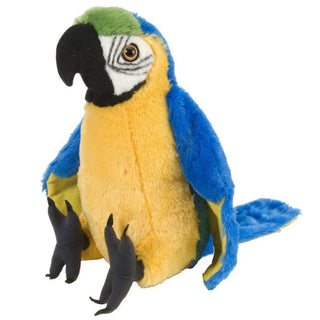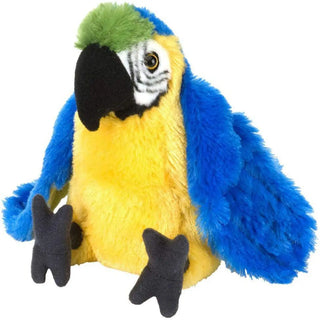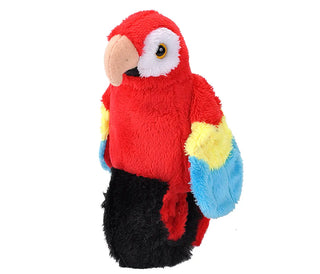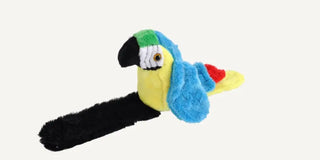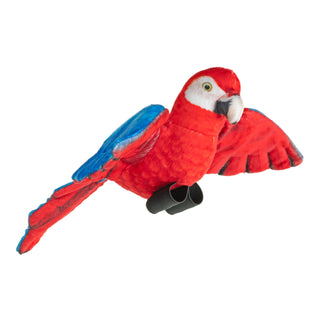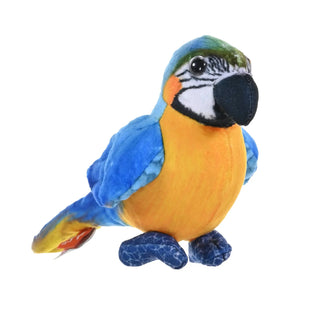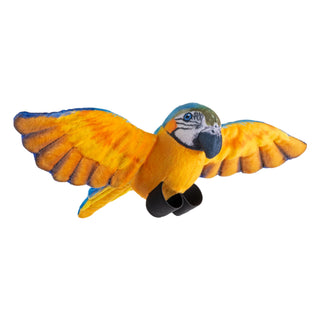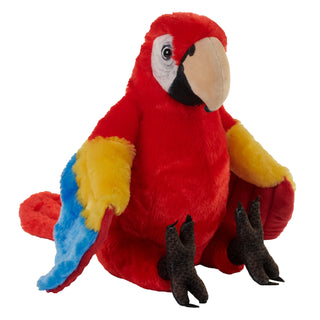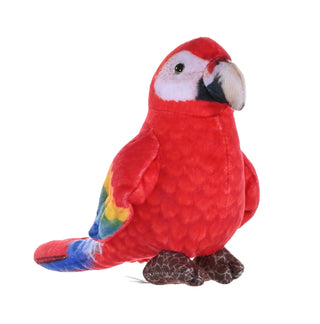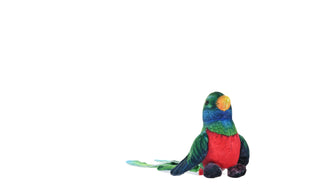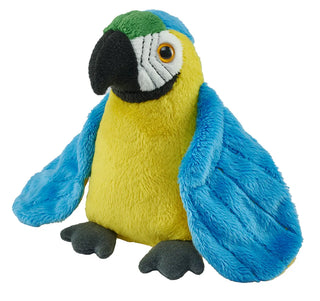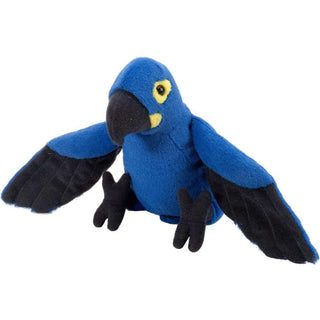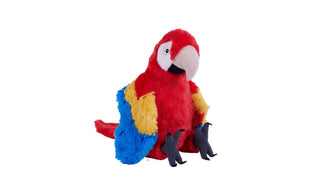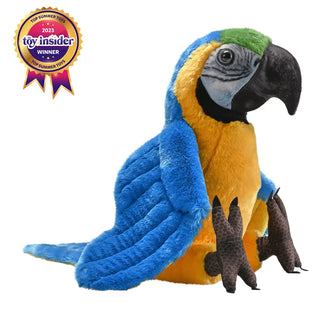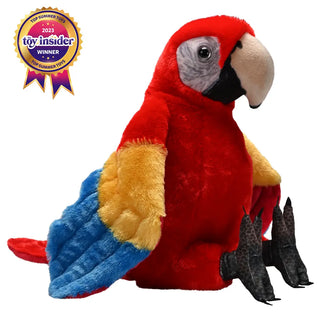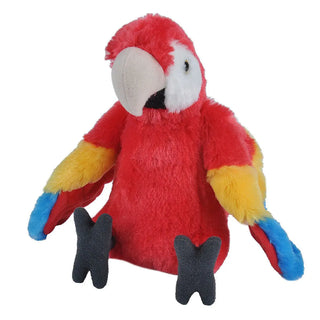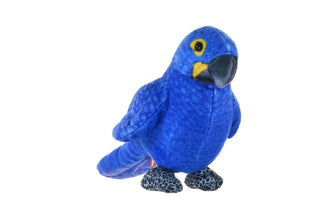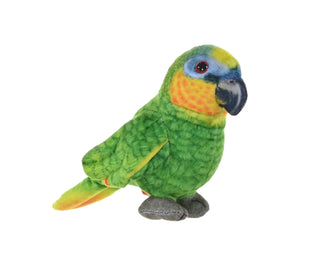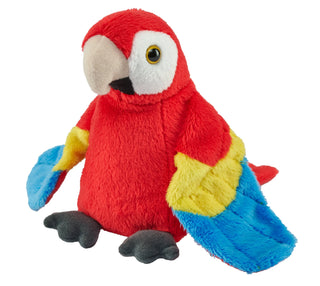Your Search For "macaw parrot" Revealed The Following:
Filter
Active Filters
Macaw Parrot Stuffed Animal - 12"
$22.99
- Unit price
- / per
INCLUDES:
- Age:0+
- AnimalType:Macaw
- Brand:Cuddlekins
- Gender:Boy
- Gender:Girl
- Macaw
- Size:12"
$22.99
- Unit price
- / per
Macaw Parrot Stuffed Animal - 8"
$12.99
- Unit price
- / per
INCLUDES:
- Age:0+
- AnimalType:Macaw
- Brand:Cuddlekins
- Gender:Boy
- Gender:Girl
- Macaw
- Size:8"
$12.99
- Unit price
- / per
Scarlet Macaw - Perching Parrot
$15.99
- Unit price
- / per
INCLUDES:
- Age:0+
- Brand:Perching Parrot
- Features:With Sound
- Gender:Boy
- Gender:Girl
- Size:7.5"
$15.99
- Unit price
- / per
Blue and Yellow Macaw - Perching Parrot
Regular price
$12.00
$14.99
Save 20%
- Unit price
- / per
INCLUDES:
- Age:0+
- Brand:Perching Parrot
- Features:With Sound
- Gender:Boy
- Gender:Girl
- Size:7.5"
Regular price
$12.00
$14.99
Save 20%
- Unit price
- / per
Rainforest Birds Scarlet Macaw Stuffed Animal - 4.5"
$12.99
- Unit price
- / per
INCLUDES:
- Age:0+
- Brand:Rainforest Birds
- Gender:Boy
- Gender:Girl
- Size:4.5"
$12.99
- Unit price
- / per
Rainforest Birds Blue & Yellow Macaw Stuffed Animal - 4.5"
$8.99
- Unit price
- / per
INCLUDES:
- Age:0+
- Brand:Rainforest Birds
- Gender:Boy
- Gender:Girl
- Size:4.5"
$8.99
- Unit price
- / per
Rainforest Birds Spixs Macaw Stuffed Animal - 4.5"
$8.99
- Unit price
- / per
INCLUDES:
- Age:0+
- Brand:Rainforest Birds
- Gender:Boy
- Gender:Girl
- Size:4.5"
$8.99
- Unit price
- / per
Rainforest Birds Blue And Yellow Macaw Stuffed Animal - 4.5"
$12.99
- Unit price
- / per
INCLUDES:
- Age:0+
- Brand:Rainforest Birds
- Gender:Boy
- Gender:Girl
- Size:4.5"
$12.99
- Unit price
- / per
Artist Collection Eco Scarlet Macaw Stuffed Animal - 15"
$30.99
- Unit price
- / per
INCLUDES:
- Age:0+
- Brand:Artist Collection Eco
- Gender:Boy
- Gender:Girl
- Size:15"
$30.99
- Unit price
- / per
Macaw Scarlet Stuffed Animal - 8"
$12.99
- Unit price
- / per
INCLUDES:
- Age:0+
- AnimalType:Macaw
- Brand:Cuddlekins
- Gender:Boy
- Gender:Girl
- Macaw
- Size:8"
$12.99
- Unit price
- / per
Rainforest Birds Scarlet Macaw Stuffed Animal - 4.5"
$8.99
- Unit price
- / per
INCLUDES:
- Age:0+
- Brand:Rainforest Birds
- Gender:Boy
- Gender:Girl
- Size:4.5"
$8.99
- Unit price
- / per
Rainforest Birds Quetzal Stuffed Animal - 4.5"
$8.99
- Unit price
- / per
INCLUDES:
- Age:0+
- Brand:Rainforest Birds
- Gender:Boy
- Gender:Girl
- Size:4.5"
$8.99
- Unit price
- / per
Pocketkins Eco Blue & Yellow Macaw Stuffed Animal - 5"
$8.99
- Unit price
- / per
INCLUDES:
- Age:0+
- Brand:Pocketkins Eco
- Features:Eco
- Gender:Boy
- Gender:Girl
- Size:5"
$8.99
- Unit price
- / per
Hyacinth Macaw Stuffed Animal - 8"
$12.99
- Unit price
- / per
INCLUDES:
- Age:0+
- AnimalType:Hyacinth Macaw
- Brand:Cuddlekins
- Gender:Boy
- Gender:Girl
- Hyacinth Macaw
- Size:8"
$12.99
- Unit price
- / per
Cuddlekins Eco Scarlet Macaw Stuffed Animal - 12"
$24.99
- Unit price
- / per
INCLUDES:
- Age:0+
- Brand:Cuddlekins Eco
- Features:Eco
- Gender:Boy
- Gender:Girl
- Size:12"
$24.99
- Unit price
- / per
Artist Collection - Blue Yellow Macaw
$43.99
- Unit price
- / per
INCLUDES:
- Age:0+
- Brand:Artist Collection
- Gender:Boy
- Gender:Girl
- Size:15"
$43.99
- Unit price
- / per
Artist Collection - Scarlet Macaw
$43.99
- Unit price
- / per
INCLUDES:
- Age:0+
- Brand:Artist Collection
- Gender:Boy
- Gender:Girl
- Size:15"
$43.99
- Unit price
- / per
Macaw Scarlet Stuffed Animal - 12"
$22.99
- Unit price
- / per
INCLUDES:
- Age:0+
- AnimalType:Macaw
- Brand:Cuddlekins
- Gender:Boy
- Gender:Girl
- Macaw
- Size:12"
$22.99
- Unit price
- / per
Rainforest Birds Hyacinth Macaw Stuffed Animal - 4.5"
$8.99
- Unit price
- / per
INCLUDES:
- Age:0+
- Brand:Rainforest Birds
- Gender:Boy
- Gender:Girl
- Size:4.5"
$8.99
- Unit price
- / per
Rainforest Birds Orange Winged Parrot Stuffed Animal - 4.5"
$8.99
- Unit price
- / per
INCLUDES:
- Age:0+
- Brand:Rainforest Birds
- Gender:Boy
- Gender:Girl
- Size:4.5"
$8.99
- Unit price
- / per
Pocketkins Eco Scarlet Macaw Stuffed Animal - 5"
$8.99
- Unit price
- / per
INCLUDES:
- Age:0+
- Brand:Pocketkins Eco
- Features:Eco
- Gender:Boy
- Gender:Girl
- Size:5"
$8.99
- Unit price
- / per
You're viewing 1-21 of 21 results

